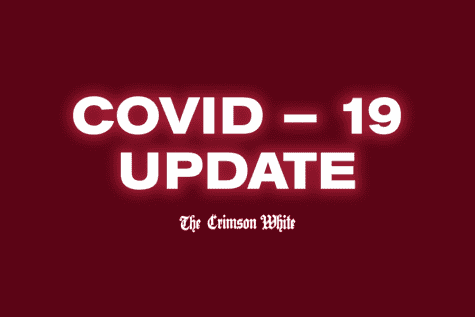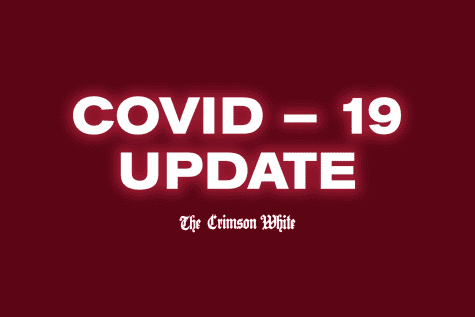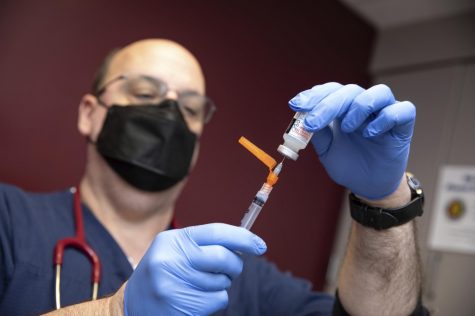Opinion: It’s the lack of care for us
August 7, 2020
Over a month ago, Safe Return UA called the University out for a plethora of loopholes found within its plan to “safely” return to campus this fall. Though press releases have announced administered testing kits and training as well as reduced classroom sizes, the University has seemed to dance around many of the aforementioned issues within the plan.
We urge the University to take accountability and immediately provide resolutions to the alarming and unsettling issues listed below:
Student Workers
Without a plan of action or a source of income from the University, student workers are forced to make an onerous decision that could put the health of ourselves and thousands of others at risk. Safe Return UA’s call to action states, “undergraduate students who work on campus should receive normal pay in the event of shifts missed due to quarantine or illness,” which is a suggestion that has not been publicly addressed.
Purchasing groceries, books for classes, paying rent and other miscellaneous expenses deplete the income of student workers. In a community of students who give an immense amount of time and dedication to multiple tasks around campus – whether it is assisting with library operations, planning and executing events with University Programs – each student deserves to receive a concrete plan that does not put their health and or monetary source in jeopardy.
Testing Transparency
On May 22, the University of Alabama issued a campus wide email stating that COVID-19 testing and tracking is mandatory, results must be submitted and training is required before returning to campus. These precautionary measures are a part of a return plan compiled by an advisory committee formed by President Stuart R. Bell. Though the plan offers a promising arrival to campus, any form of accountability between the University’s administration and its surrounding community is void. There are no checks and balances to ensure [the plan’s] effectiveness throughout the academic year.
To ensure a healthy community, it is vital that testing and tracking results be consistent and transparent in the event of a spike or decline in local cases. The city of Tuscaloosa has openly stated its worry about the potential increase of COVID-19 cases with students returning to campus. Recently Mayor Walt Maddox declared a second state of emergency, with one of his main concerns being “the arrival of 25,000 plus citizens over the next [couple of] weeks,” while the “DCH Health System [is] experiencing higher numbers of inpatient COVID-19 [cases] and deaths are on the rise.” It is the University’s role to provide an open and honest form of communication regarding the dangers [COVID-19 cases] that directly affect the University and greater Tuscaloosa community. UA students, faculty and staff cannot afford to trust a fragile plan. But testing and tracking transparency will hold us all accountable in reducing the spread of this growing virus.
Provided PPE
Three of the University’s rival SEC schools are taking extra steps to guarantee safe campuses to return to in the fall. In a recent article, we compared the University’s return plan with those of Mississippi State University, the University of Georgia and Auburn University. That is when we discovered that our institution is merely doing the bare minimum. Two of said universities [UGA and Auburn] have publicly stated that they are providing free masks, digital thermometers and sanitizers to all students, faculty and staff. Mississippi State requires that students, faculty and staff track their symptoms every 24 hours compared to the 72 hours required by UA.
Although we are all excited to return to campus, it will be a short-lived experience if precautions are not heightened now. With the University of Alabama being the largest collegiate school in the state and the fourth largest in the SEC, we need our administration to enhance its safety measures. With face-to-face interactions still being required in some academic settings and individuals having to report to work, the use of masks “aren’t a trend; they are a mandated medical necessity,” as stated by UA nursing senior Katherine Di Valerio.
Instead of placing them in vending machines for a fee, the University should provide masks for all students attending campus for classes, as well as for all faculty and staff, in order to ensure inexpensive and adequate protection for us all. The use of digital thermometers will act as an instant measure to check the possibility of symptoms, a stronger method than solely tracking symptoms through an app. Supplying sanitizers will ensure our community remains clean and safe. Tracking symptoms every 24 hours will allow the University to make certain that case numbers are not rapidly increasing.
The plan released by the University of Alabama assumes that all individuals within its community are able to equip themselves with necessary PPE and sanitation products. To a community of individuals that give the University a great deal financially, academically and physically, we should be provided with the needed materials to keep us healthy.
But hey, at least we have a solid football schedule.
This story has been edited to reflect that the University has no published plan to provide PPE for all students, faculty and staff. Officials have since said that a plan is in the works but have not given specific details.









